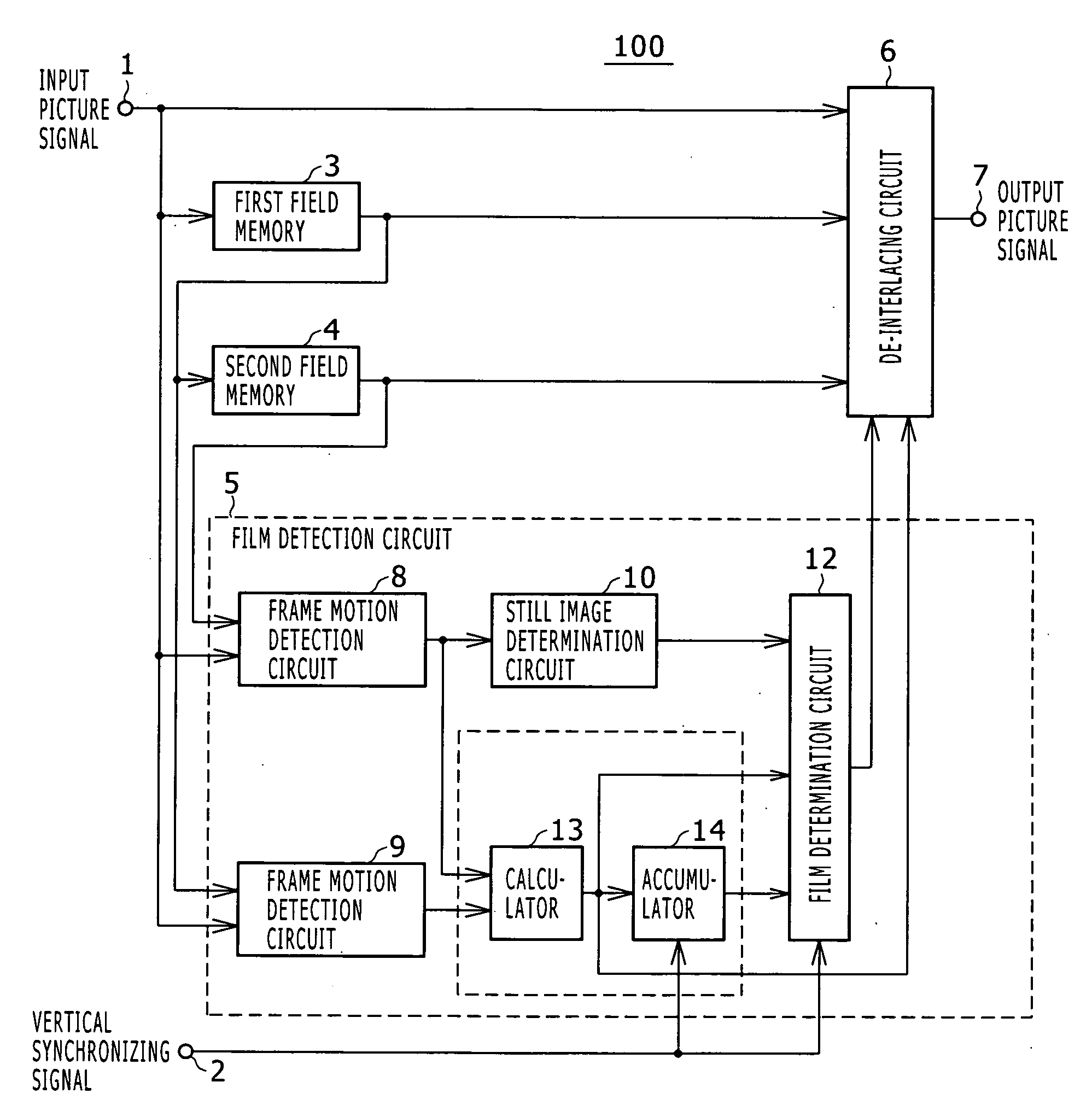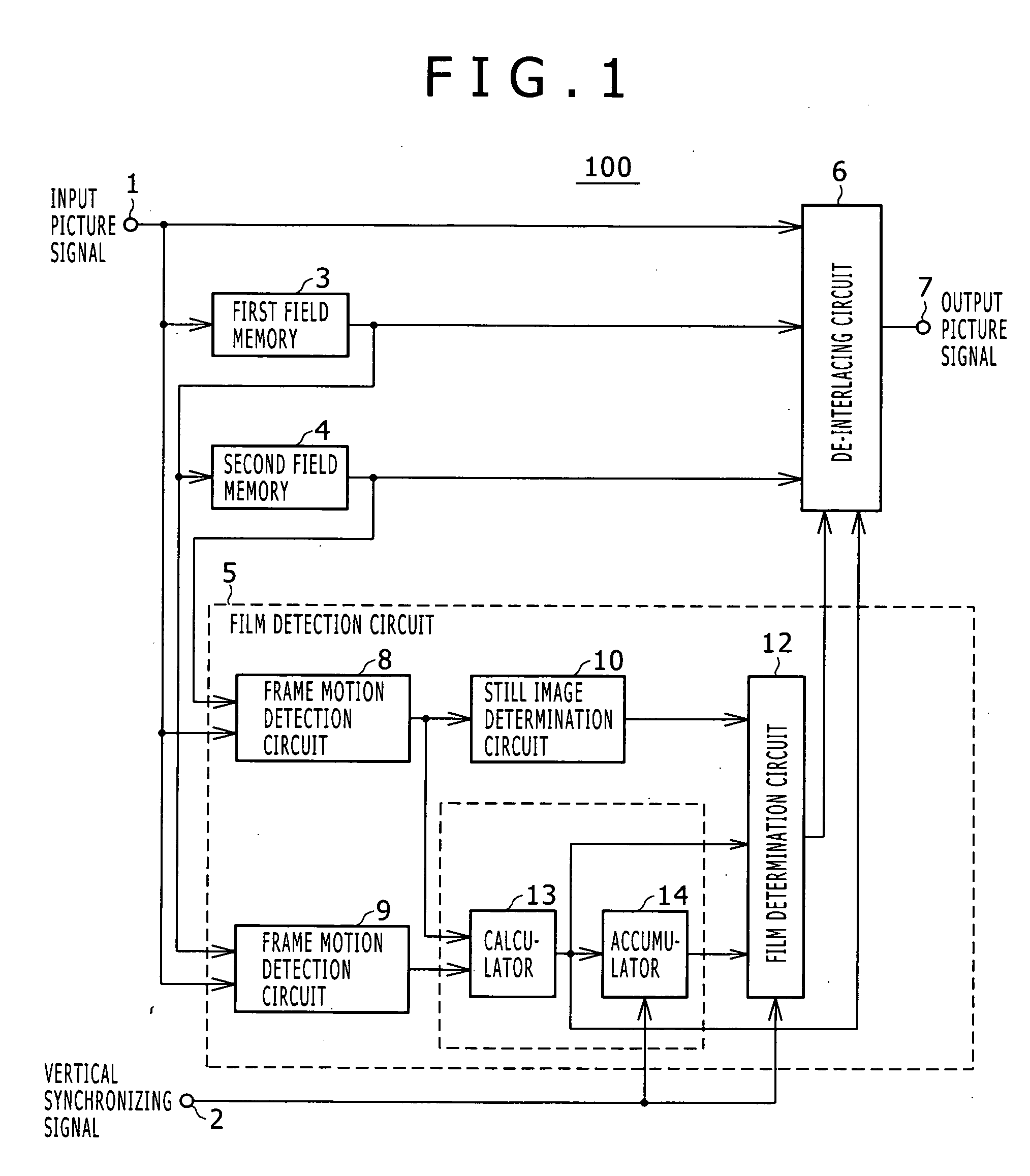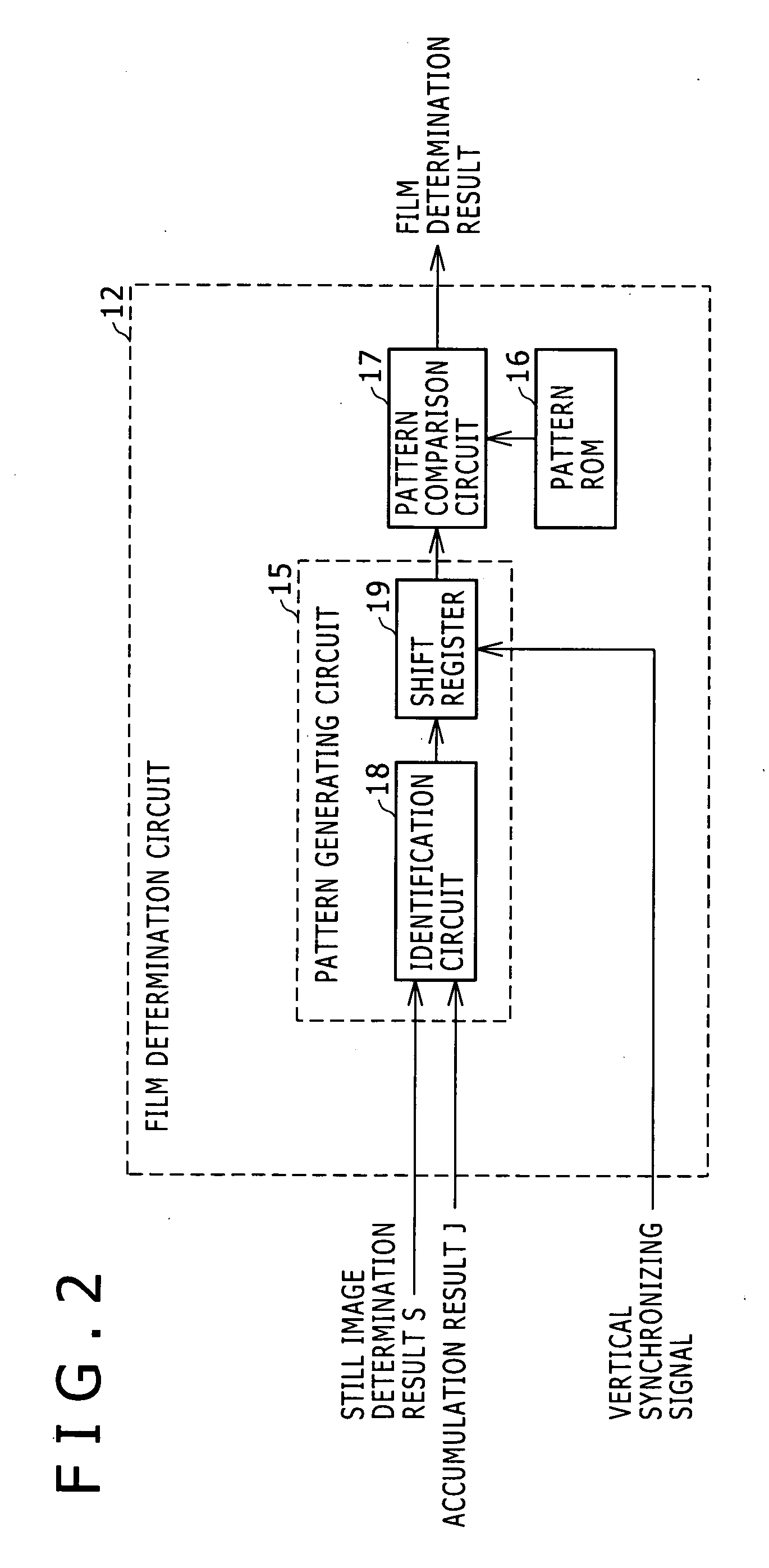Film detection device and method, and picture signal processing device and method
a technology of signal processing and detection device, which is applied in the direction of television system scanning details, standard conversion, television systems, etc., can solve the problems of low detection accuracy, degraded image quality, and 3:2 detection, and achieve the effect of high detection accuracy and quick respons
- Summary
- Abstract
- Description
- Claims
- Application Information
AI Technical Summary
Benefits of technology
Problems solved by technology
Method used
Image
Examples
first embodiment
[0142]FIG. 1 is a view illustrating the overall configuration of a picture signal processing device according to a first embodiment of the present invention.
[0143]As illustrated in FIG. 1, a picture signal processing device 100 according to the first embodiment includes an input terminal 1 adapted to receive a picture signal, an input terminal 2 adapted to receive a vertical synchronizing signal, a first field memory 3 adapted to delay the picture signal received from the input terminal 1 by one field, a second field memory 4 adapted to delay the picture signal received from the input terminal 1 by two fields by delaying the picture signal already delayed one field by delaying one more field, a film detection circuit 5 adapted to determine the probability that the picture signal received from the input terminal 1 is an interlaced signal generated by the telecine process, a de-interlacing circuit 6 adapted to change de-interlacing methods according to the detection result of the film...
second embodiment
[0261]FIG. 16 is a view illustrating the overall configuration of the picture signal processing device according to a second embodiment of the present invention.
[0262]In FIG. 16, the components having the same function as those in the first embodiment are denoted by the same reference numerals, and a description thereof will be omitted.
[0263]A picture signal processing device 100A according to the second embodiment includes, a third field memory 27 adapted to delay a picture signal, which has been delayed by two fields, by one more field so as to delay the picture signal received from the input terminal 1 by three fields, a film detection circuit 28 adapted to determine whether the picture signal received from the input terminal 1 is an interlaced signal generated by the telecine process, and a de-interlacing circuit 29 adapted to change de-interlacing methods according to the detection result of the film detection circuit 28.
[0264]The de-interlacing circuit 29 according to the seco...
third embodiment
[0319]FIG. 20 is a view illustrating the overall configuration of the picture signal processing device according to a third embodiment of the present invention.
[0320]In FIG. 20, the components having the same function as those in the first and second embodiments are denoted by the same reference numerals, and a description thereof will be omitted.
[0321]A picture signal processing device 100B includes, a film detection circuit 44 adapted to determine whether the picture signal received from the input terminal 1 is an interlaced signal generated by the telecine process, and a de-interlacing circuit 45 adapted to change de-interlacing methods according to the detection result of the film detection circuit 44.
[0322]The dotted line in FIG. 20 represents the film detection circuit 44. The area enclosed by the dotted line illustrates the internal configuration of the same circuit 44. The frame motion detection circuit 30, first and second field motion detection circuits 31 and 32 and movin...
PUM
 Login to View More
Login to View More Abstract
Description
Claims
Application Information
 Login to View More
Login to View More - R&D
- Intellectual Property
- Life Sciences
- Materials
- Tech Scout
- Unparalleled Data Quality
- Higher Quality Content
- 60% Fewer Hallucinations
Browse by: Latest US Patents, China's latest patents, Technical Efficacy Thesaurus, Application Domain, Technology Topic, Popular Technical Reports.
© 2025 PatSnap. All rights reserved.Legal|Privacy policy|Modern Slavery Act Transparency Statement|Sitemap|About US| Contact US: help@patsnap.com



